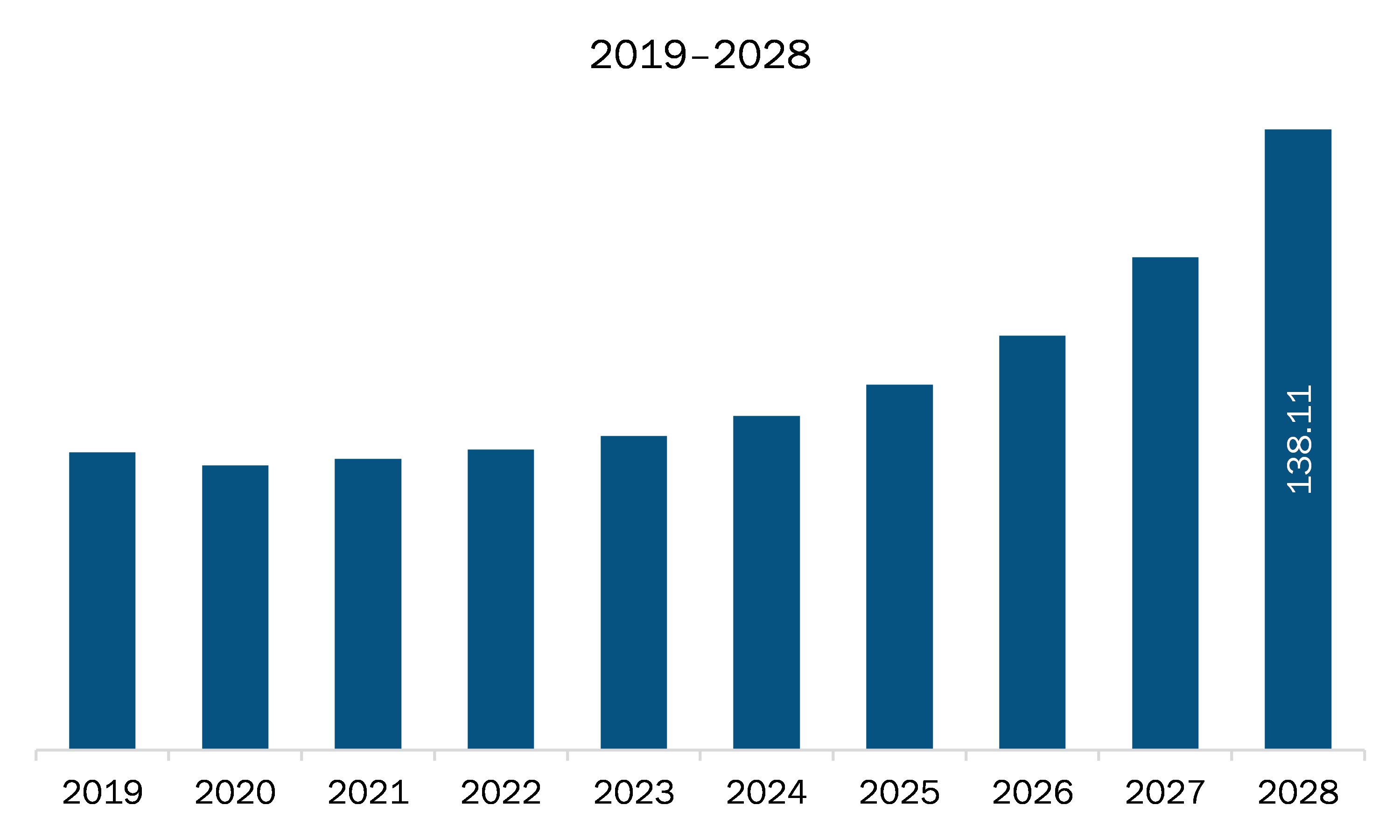The North America plastic to fuel market is expected to grow from US$ 64.77 million in 2021 to US$ 138.11 million by 2028; it is estimated to grow at a CAGR of 11.4% from 2021 to 2028.
The US, Canada, and Mexico are economies in North America. Increasing awareness regarding greenhouse gas emission from fuel making sector is expected to surge the market growth. Food and green waste account for 44% of region garbage, while dry recyclables such as paper, cardboard, plastic, glass, and metal account for 38%. Due to economic development, population expansion, and the degree of urbanization, it is predicted that the quantity of waste created may continue to rise. However, at least 33% of garbage is thrown in the open and is not managed in an environmentally friendly manner. Approximately 93% of garbage is burnt or deposited on road easements, open areas, or rivers, particularly in low-income nations such as Mexico. Nonrecyclable polymers such as polystyrene, polyethylene terephthalate (PET), and polyvinyl chloride (PVC) are currently the major sources of concern. More than 90% of plastic is not recycled and is discarded, landfilled, or simply poured into the ocean instead. Only 9–10% of waste plastic has been collected and recycled, implying that only 9–10% of waste plastic has been collected and recycled. This opens up a huge market potential for the plastic-to-fuel industry, since recycling these waste plastics will produce nonrecyclable waste plastics that can be used in PFT in the not-too-distant future. As a result, the demand for plastic to fuel facilities is projected to rise as nonrecyclable plastics are recovered from recycling facilities and new/landfill sources. Waste to energy (WTE), in particular, has a role to play in achieving the transformation to a sustainable energy ecosystem as a renewable energy source to reduce greenhouse gas (GHG) emissions, a clean demand response option, an eco-industrial park design consideration, and sometimes the only option for end-of-life waste treatment. So, growing awareness regarding greenhouse effect and pollution is expected to increase the demand of plastic to fuel, thereby driving the North America plastic to fuel market.
In case of COVID-19, North America is highly affected specially the US. The North American countries produce and consume plastic in tremendously high volume. In 2020, the demand for plastic rose enormously due to the production of medical devices and protection equipment. This highlighted enormous volume of plastic waste as at the end of life of the plastic made medical devices and protection equipment, these products were disposed to plastic landfills/pits. The North American region has a number of plastics to fuel recycling companies, especially in the US and Canada. The massive outbreak of the virus in the US had crippled the operations of various plastic to fuel recycling units. The disruption in logistics of plastic waste to fuel conversion units/plants resulted in lower volume of production in the year. This highlighted lower revenue among the companies as well as in the plastic to fuel market. Several companies have adopted different strategies to continue their operations and increase their annual sales statistics. For instance, Agilyx Inc., one of the forerunners in the plastic to fuel market developed a strategy to launch Cyclyx International LLC, a post-use plastic feedstock management in 2020. The new company aims at increasing recycling of waste plastic. This strategy is anticipated to boost Agilyx Inc’s business in the coming years. Similarly, in 2020, Nexus Fuel LLC and Shell agreed on contract, where Nexus Fuel LLC would supply Shell a volume of 60,000 tonnes of pyrolysis liquid derived from plastic waste to Shell over a period of 4years.
With the new features and technologies, vendors can attract new customers and expand their footprints in emerging markets. This factor is likely to drive the North America plastic to fuel market. The North America plastic to fuel market is expected to grow at a good CAGR during the forecast period.

- This FREE sample will include data analysis, ranging from market trends to estimates and forecasts.
North America Plastic to Fuel Market Segmentation
North America Plastic to Fuel Market – By Technology
- Pyrolysis
- Gasification
- Depolymerization
North America Plastic to Fuel Market – By End Product
- Crude Oil
- Hydrogen
- Others
North America Plastic to Fuel Market, by Country
- US
- Canada
- Mexico
North America Plastic to Fuel Market -Companies Mentioned
- Agilyx
- Bradam Group, LLC.
- Cassandra Oil AB
- Klean Industries Inc.
- nexus FUELS, LLC
- OMV Aktiengesellschaft
- Plastic Advanced Recycling Corp.
- Plastic2Oil, Inc.
- RESYNERGI
North America Plastic to Fuel Report Scope
| Report Attribute | Details |
|---|---|
| Market size in 2021 | US$ 64.77 Million |
| Market Size by 2028 | US$ 138.11 Million |
| CAGR (2021 - 2028) | 11.4% |
| Historical Data | 2019-2020 |
| Forecast period | 2022-2028 |
| Segments Covered |
By Technology
|
| Regions and Countries Covered |
North America
|
| Market leaders and key company profiles |
|
- Historical Analysis (2 Years), Base Year, Forecast (7 Years) with CAGR
- PEST and SWOT Analysis
- Market Size Value / Volume - Regional, Country
- Industry and Competitive Landscape
- Excel Dataset
Testimonials
Reason to Buy
- Informed Decision-Making
- Understanding Market Dynamics
- Competitive Analysis
- Identifying Emerging Markets
- Customer Insights
- Market Forecasts
- Risk Mitigation
- Boosting Operational Efficiency
- Strategic Planning
- Investment Justification
- Tracking Industry Innovations
- Aligning with Regulatory Trends






















 Get Free Sample For
Get Free Sample For